
The 2000s
The 1990s brought media attention to Berkeley Lab and to what was then called the Environmental Energy Technologies Division. The Lab’s research on the accelerated expansion of the universe as well as the division's building efficiency research—including the Aeroseal duct sealing system, cool roofs, windows that can alter reflectivity, and economical (and safe) lighting systems like the cool fluorescent torchiere and the Berkeley Lamp were of focus. In addition, Division Director Mark Levine was early to recognize the energy implications of China’s rapidly growing economy; Berkeley Lab’s China Energy Group signed agreements in 1999 that have grown into a vital role in advising DOE and U.S. policymakers on China’s energy policy. The Energy Analysis Department was responsible for significant advances in energy policy research as the Appliance Standards Group and Electricity Markets and Policy Group made significant contributions to energy efficiency policy and utility resource planning.
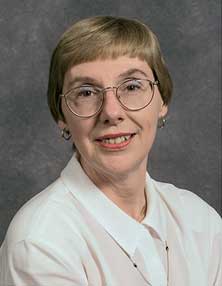 February 29 - Daisey dies
February 29 - Daisey dies
Joan Daisey, the head of the Indoor Environment Department, dies after a long battle with cancer. She is replaced by Bill Fisk on an acting basis. Read a historical profile about Daisey.
Wind and solar expert analysis begins
Berkeley Lab issues the first national market reports on wind energy and solar photovoltaics, later becoming world experts and analysis leaders on electricity markets and policy and the electric grid.
April - Rosenfeld appointed California energy commissioner
Rosenfeld appointed to first term as a commissioner of the California Energy Commission by Governor Gray Davis.
That year - Don Lucas appointed Environmental Energy Technologies Division safety manager
November 7 - George W. Bush elected president
Energy services to the electric grid
The Vehicle-to-Grid Simulator is created, providing a platform for electric grid system operators, utilities, policy makers, battery and plug-in EV manufacturers, researchers, and the business community. Stakeholders begin to study and evaluate the challenges and benefits of utilizing PEVs for energy services to the electric grid.
January - Spencer Abraham appointed U.S. secretary of energy
May - Release of national energy policy by the Bush/Cheney administration
June - Clinton/Gore Partnership for a New Generation of Vehicles program ended
President Bush kills the Clinton/Gore administration's Partnership for a New Generation of Vehicles, although much of the related U.S. Department of Energy research and development continues.
California electricity crisis
The electricity crisis is generally attributed to flaws in the design of California’s electricity
market and private generation companies and power marketers companies exercising "Market Power".
EnergyPlus
Berkeley Lab co-develops EnergyPlus, which emerges as the standard energy simulation program for buildings. EnergyPlus is a whole-building energy simulation program that engineers, architects, and researchers use to model both energy consumption — for heating, cooling, ventilation, lighting and plug and process loads — and water use in buildings.
The Environmental Energy Technologies Division's "dark ages" that started with the demise of the Ted Gardner newsletter ends with first edition of What's New.
January - The first edition of What's New in EETD is published
Originally, the almost weekly electronic division newsletter was a joint effort of Nancy Padgett and Don Grether; before long, Grether largely took over.
January - Spencer Abraham announces FreedomCAR
Secretary of Energy Spencer Abraham announces the FreedomCAR partnership where CAR stands for Cooperative Automotive Research. Partnership is between U.S. Department of Energy and the U.S. auto industry. Focus is on hydrogen-fueled fuel cell vehicles.
March - Assistant Secretary David Garmin announces pending reorganization of the U.S. Department of Energy's Energy Efficiency and Renewable Energy department
July - Jim Cole steps down as California Institute for Energy Efficiency director; Carl Blumstein is appointed director
October - The U.S. Department of Energy celebrates its 25th anniversary
Many of the former U.S. Department of Energy secretaries attend the ceremony.
January - President Bush announces the Hydrogen Fuel Initiative
Jun - Seventh leadership retreat
The seventh leadership retreat was held at Bodega Bay Lodge. The theme was "Strategic Positioning." A strengths, weaknesses, opportunities, and threats analysis was conducted.
August - Siri dies at age 85
Will Siri, the first leader of Energy Analysis, dies at age 85. Siri was also deputy leader and scientific coordinator of the first American expedition to successfully climb Mt. Everest.
Fall - Berkeley Lab contract open to competition for first time
Congress passes legislation that requires the contract to manage the Lab be competed for the first time.
October - Lab and division directors at 30th anniversary celebration
Division celebrates 30th anniversary with a reception in the cafeteria, with talks by former and present Lab and division directors, with the exception of David Shirley.
October - Photo collage assembled for 30th anniversary
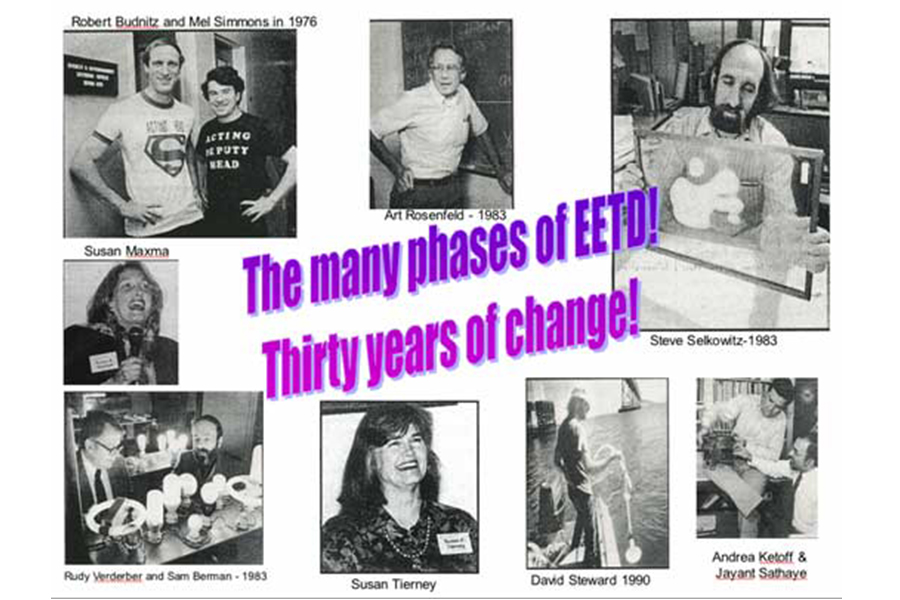
December - Summary of anniversary celebration
A summary of the anniversary event, written by Allan Chen, appears in What's New.
December - Washington, DC, Office celebrates its 10th anniversary
December - Work starts on Building 90 air conditioning system
Work starts on installing an air conditioning system in Building 90 with the demolition of the old HVAC system.
The beginning of a potentially a new era for the Lab as the University of California / U.S. Department of Energy contract is competed.
February - Steve Wiel steps down as Energy Analysis Department head; Jim McMahon is appointed the new head
February - Advent of the Demand Response Research Center with Mary Ann Piette as director
May - University of California is "interested" in managing Lab
The U.S. Department of Energy requests "expressions of interest" to manage the Lab. The University of California states that it is interested.
August - Steve Chu appointed Lab director by Regents
September - University of California assembles Berkeley Acquisition Team
The University of California assembles the Berkeley Acquisition Team in case the university decides to compete under the terms of the yet-to-be released request for proposals. Most of the members are Berkeley Lab employees, but their Berkeley Acquisition Team work is conducted in the Kaiser Building, they are on the University of California payroll, and use University of California equipment.
November - George W. Bush elected to second term as president
December - National Commission on Energy Policy
The National Commission on Energy Policy issues strategy to address long-term U.S. energy challenges.
January - Rosenfeld appointed to second term to the California Energy Commission
Removing deadly arsenic from water
Researchers develop an inexpensive, effective electrochemical solution to remove arsenic from water, addressing a problem that kills tens of thousands of people annually worldwide.
February - Samuel Bodman appointed U.S. Secretary of Energy
February - Grether to retire
Mark Levine sends out a level 1 email announcing that Don Grether is retiring on February 28 and that Rick Russo has replaced Don as the head of the Advanced Energy Technologies Department.
February 28 - Grether retires, steps down as deputy division director and head of the Advanced Energy Technologies Department
Retirement luncheon is held at HS Lordships in Emeryville.
That year - The Gathering Storm
National Academy of Sciences releases "Rising Above the Gathering Storm: Energizing and Employing Americans for a Brighter Economic Future."
Darfur Stove
The Berkeley-Darfur Stove is designed and developed in response to the humanitarian crisis of Darfur refugees. The energy-efficient stove is created in response to women who risk their lives by walking up to seven hours a day to find firewood to cook. By 2021, more than 60,000 stoves are in use, mostly in refugee camps in Africa.
April - Don Lucas appointed assistant division director for Space and Environment, Health and Safety
April - Grether returns as a rehired retiree
On April 24 Grether is temporarily named acting division director.
Late April - The U.S. Department of Energy awards new Berkeley Lab management contract to the University of California
June - Mark Levine returns to work as division director
July - The Environmental Energy Technologies Division has its first summer picnic and Town Hall Meeting
Late July - Congress passes the Energy Policy Act of 2005 (EPACT-05)
October - Berkeley Lab's online newsletter, Today at Berkeley Lab, announces that Nancy Padgett is selected as assistant to Laboratory director
Barbara West is acting business manager
January 10 - Robert Sawyer is chair of the California Air Resources Board
Governor Schwarzenegger appoints Robert Sawyer as Chair of the California Air Resources Board. Sawyer was one of the founders of the division's combustion program.
February - Kim Williams is division business manager
Levine announces that Kim Williams will be the new business manager, replacing Nancy Padgett and (now) Barbara West. Levine thanks Barbara for a job well done.
April - West's last day as interim business manager
April 27 - Rosenfeld wins 2005 Fermi Award
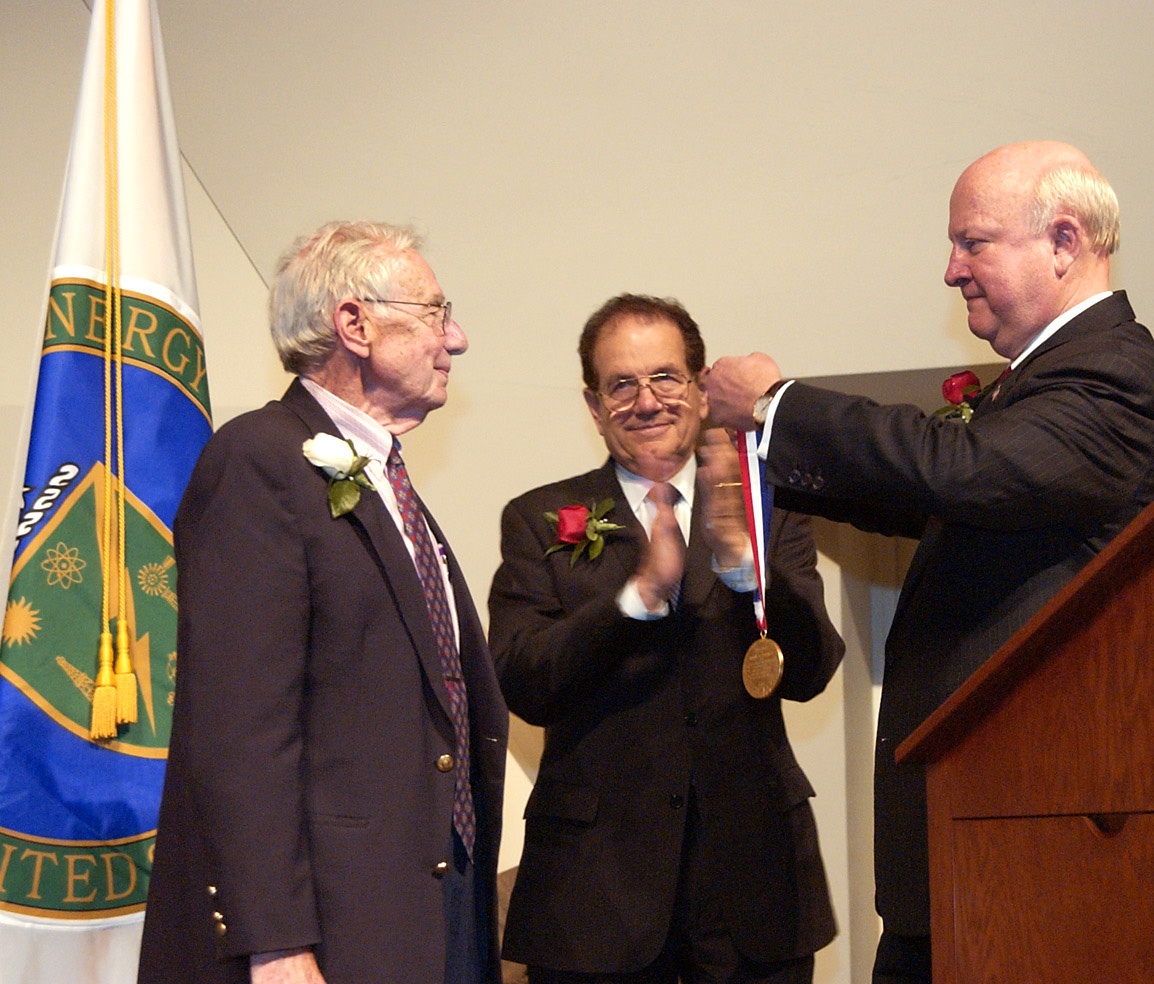
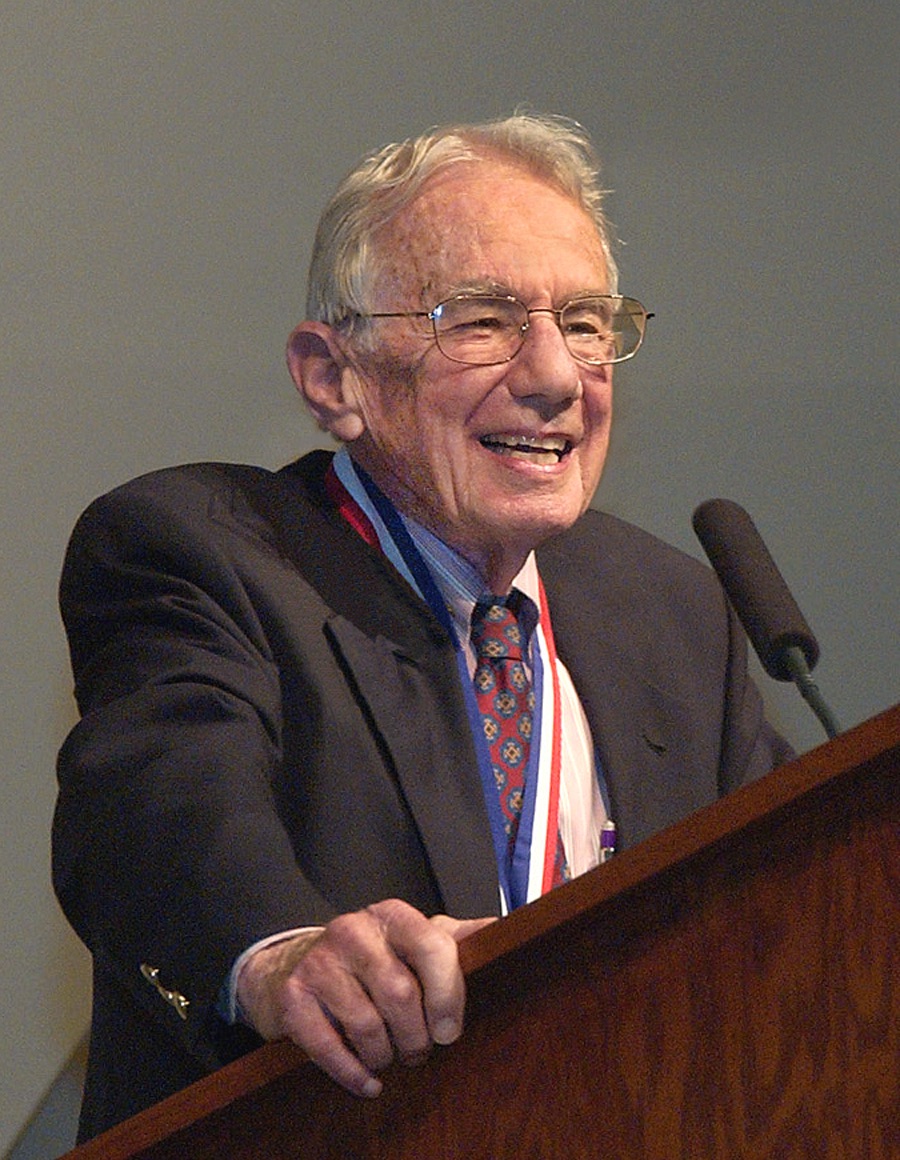
President Bush names Art Rosenfeld as the winner of the 2005 Enrico Fermi Award. Administered by the U.S. Department of Energy, the award is the most prestigious in science awarded by the federal government. In the photo, Art is handed the medal by then-secretary Sam Bodman, while the Director of the Office of Science Ray Orbach looks on. The award ceremony was held on June 21 in the National Academy of Sciences Building in Washington, D.C.
April 28 - Energy Symposium for Rosenfeld's 80th Birthday
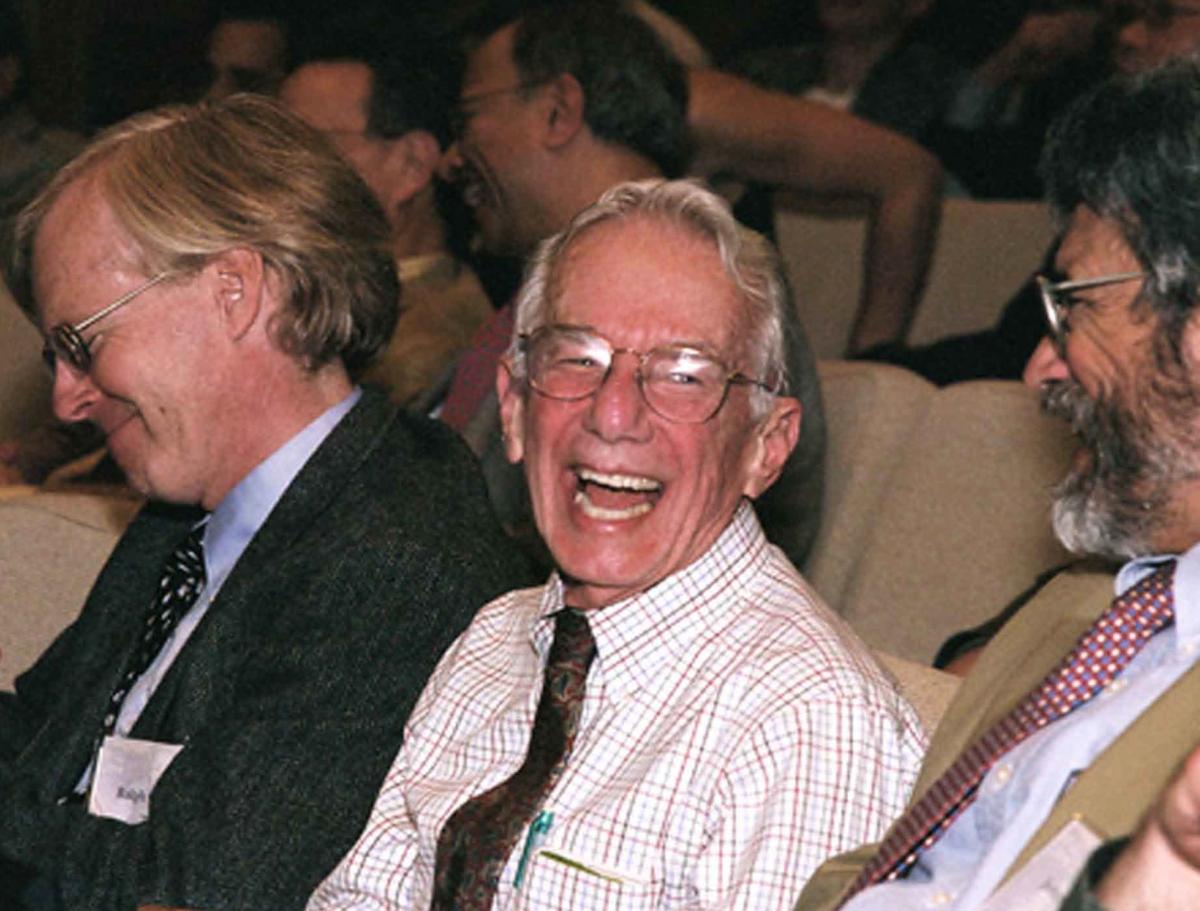 In what must be one of the most amazing but wonderful coincidences, an "Energy Symposium: The Rosenfeld Effect" was held on campus in honor of Art's 80th birthday. It was announced that he had just won the Fermi Award. A dinner at the Faculty Club was held after the Symposium.
In what must be one of the most amazing but wonderful coincidences, an "Energy Symposium: The Rosenfeld Effect" was held on campus in honor of Art's 80th birthday. It was announced that he had just won the Fermi Award. A dinner at the Faculty Club was held after the Symposium.
In the photo the man to Art's right is Ralph Cavanagh of the Natural Resources Defense Council, and on Art's left is John Holdren of Harvard University.
August 26 - Founder's Day on Lab's 75th anniversary
Lab holds Founder's Day exactly 75 years after Ernest Lawrence founded the Radiation Laboratory. There are bands, fire dancing, food, brief talks by Director Chu and local politicians, and various booths and activities. The Environmental Energy Technologies Division was the only division to have an exhibit, featuring things that people can easily relate to.
September - Jeff Harris, leader of the Washington, D.C., Project Office, accepts a position at the Alliance to Save Energy
September - Governor signs AB-32
Governor Schwarzenegger signs Assembly Bill 32: The Global Warming Solutions Act of 2006. California Air Resources Board is in charge of implementation.
October - George Smoot wins the Nobel Prize in physics
Smoot shared the prize with John C. Mather of the NASA Goddard Space Flight Center for their discovery of subtle irregularities in the cosmic microwave background radiation, the faint thermal afterglow from the Big Bang.
November - Final events for 75th Annversary; Lab has full-day Scientific Symposium
Dignitaries at the anniversary gala at the Claremont Hotel that evening included Robert Dynes, University of California president; Robert Birgeneau, University of California chancellor; Samuel Bodman, U.S. secretary of energy; directors or designees from all the U.S. Department of Energy labs; and George Smoot.
Important Climate Policy
Researchers help to launch China’s Top-1000 Energy Consuming Enterprises Program, which The Economist calls “arguably the single most important climate policy in the world.”
February - Mark Levine steps down as division director for health reasons; Bill Fisk appointed acting division director
June - Don Lucas accepts position as deputy director of the Environment, Health and Safety Division
June 26 - Governor Schwarzenegger removes Bob Sawyer as the chair of the California Air Resources Board
July 26 - Robert Kostecki is appointed assistant division director for Space and Environmental Health and Safety
August - The America COMPETES Act becomes law
Largely based on "Gathering Storm," the America COMPETES Act authorizes the Advanced Research Projects Agency–Energy. The acronym stands for creating opportunities to meaningfully promote excellence in technology, education, and science.
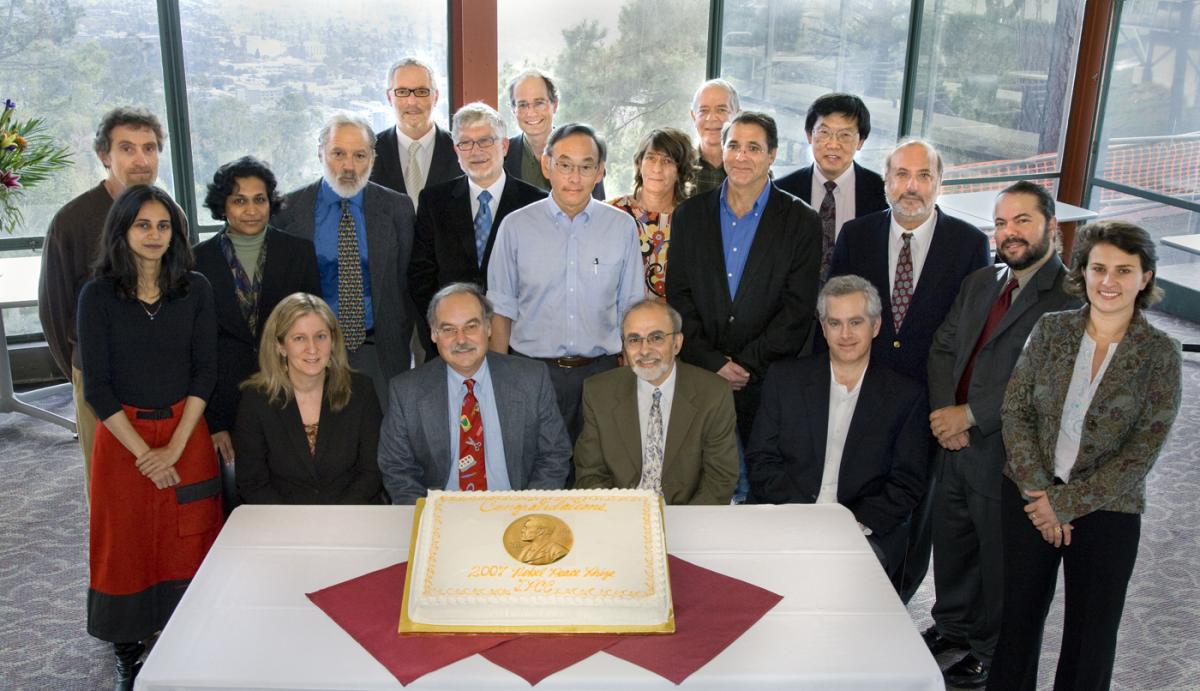 Fall - 2007 Nobel Peace Prize jointly awarded to Al Gore and the Intergovernmental Panel on Climate Change
Fall - 2007 Nobel Peace Prize jointly awarded to Al Gore and the Intergovernmental Panel on Climate Change
Eighteen current or past members of Environmental Energy Technologies Division worked on one or more Intergovernmental Panel on Climate Change reports and thus are considered Nobel laureates. The honorees' work alerted the world to humanity’s role in causing climate change and urged countermeasures to prevent, in the words of the Norwegian Nobel Committee, a crisis “threatening the basis of human life.”
October - Arun Majumdar appointed division director following a search
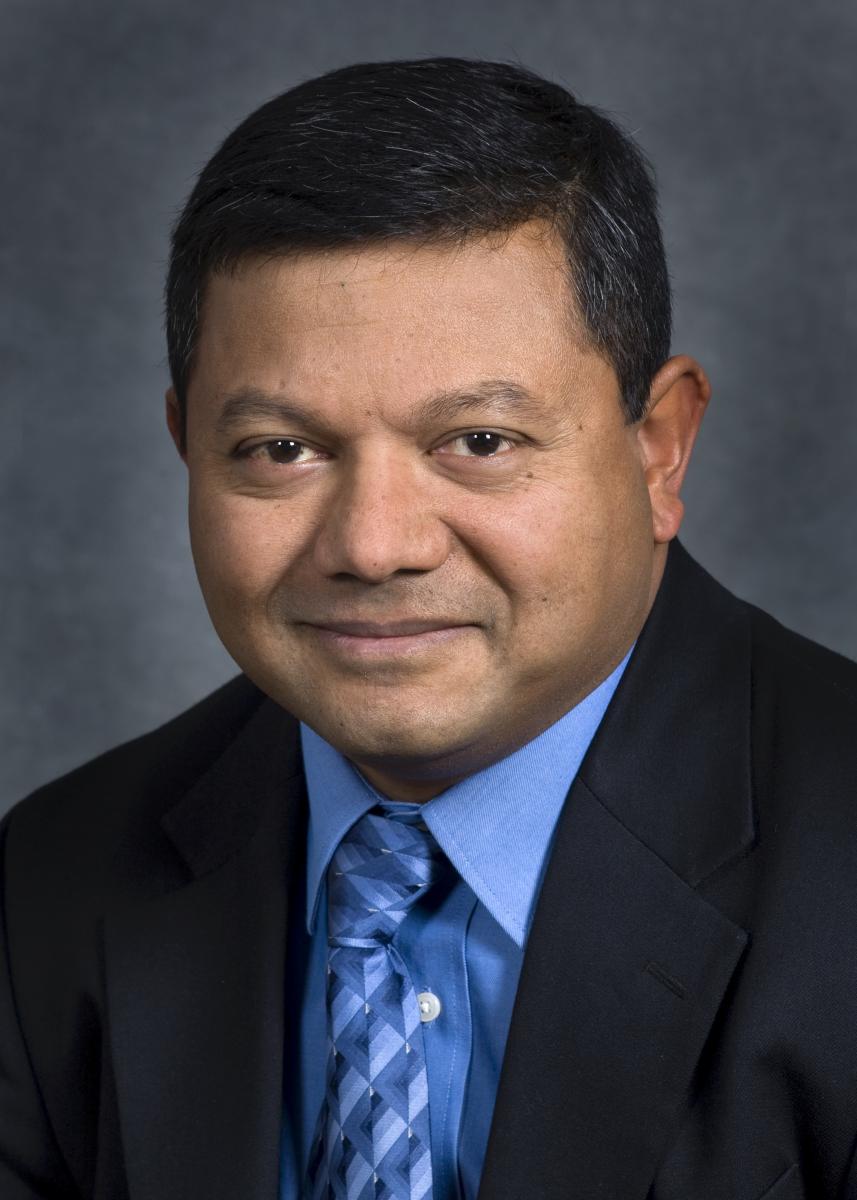
Soon thereafter - Gadgil appointed deputy division director for strategic planning
"Greening" the Capitol
Berkeley Lab supports the Green the Capitol Initiative, a mandate by Speaker Nancy Pelosi to make the US House of Representatives a model of sustainability. The Initiative results in a 50% reduction in energy use and net-zero carbon emissions from House office buildings.
June - Gasoline rises to as much as $4.75 in the Berkeley area
Datacenters energy use analysis
Researchers conduct the first comprehensive analysis on energy use in data centers. The report documents data center energy use of roughly 61 billion kilowatt-hours (1.5% of total US energy consumption), as well as savings opportunities of up to 55%.
Fall - Budnitz (second Energy and Environment Division head) returns to Lab in Earth Sciences Division to work on nuclear power
October - Arum Majumdar appoints Kim Williams as Environmental Energy Technologies Division deputy director for operations, a step up from senior business manager
November - Barack Obama elected president
Standardizing building energy efficiency
Berkeley Lab leads development of the Open Automated Demand Response (OpenADR) communication standard to enable buildings, EVs and industrial systems to communicate with the grid, which later becomes the most widely used open standard essential for modernizing our electricity grid.
Launch of power outage calculator
Researchers, in partnership with industry, create the online Interruption Cost Estimate (ICE) Calculator (icecalculator.com), which enables utility and government planners to estimate the cost of a power outage — crucial data as we endure more widespread power outages due to climate change.
January - Congress passes and the President signs the American Recovery and Reinvestment Act
January - Steven Chu is confirmed as U.S. Secretary of Energy; Paul Alivisatos becomes acting Laboratory director
February - The American Recovery and Reinvestment Act appropriates funds for a multitude of agencies, including the U.S. Department of Energy
The American Recovery and Reinvestment Act funding is used to start Advanced Research Projects Agency-Energy; billions of dollars of additional funds are appropriated for a multitude of agencies, including DOE.
October - Arun Majumdar steps down to become first director of Advanced Research Projects Agency-Energy; Ashok Gadgil appointed acting division director
Carbon Cycle 2 Retreat
Lab Director Alivisatos convenes a retreat of Lab division directors and senior researchers to discuss a new initiative entitled Carbon Cycle 2 in Santa Cruz.
Soon thereafter - Robert Kostecki appointed acting deputy division director for research; Melissa Lunden appointed acting assistant division director for Space and Environment, Health and Safety
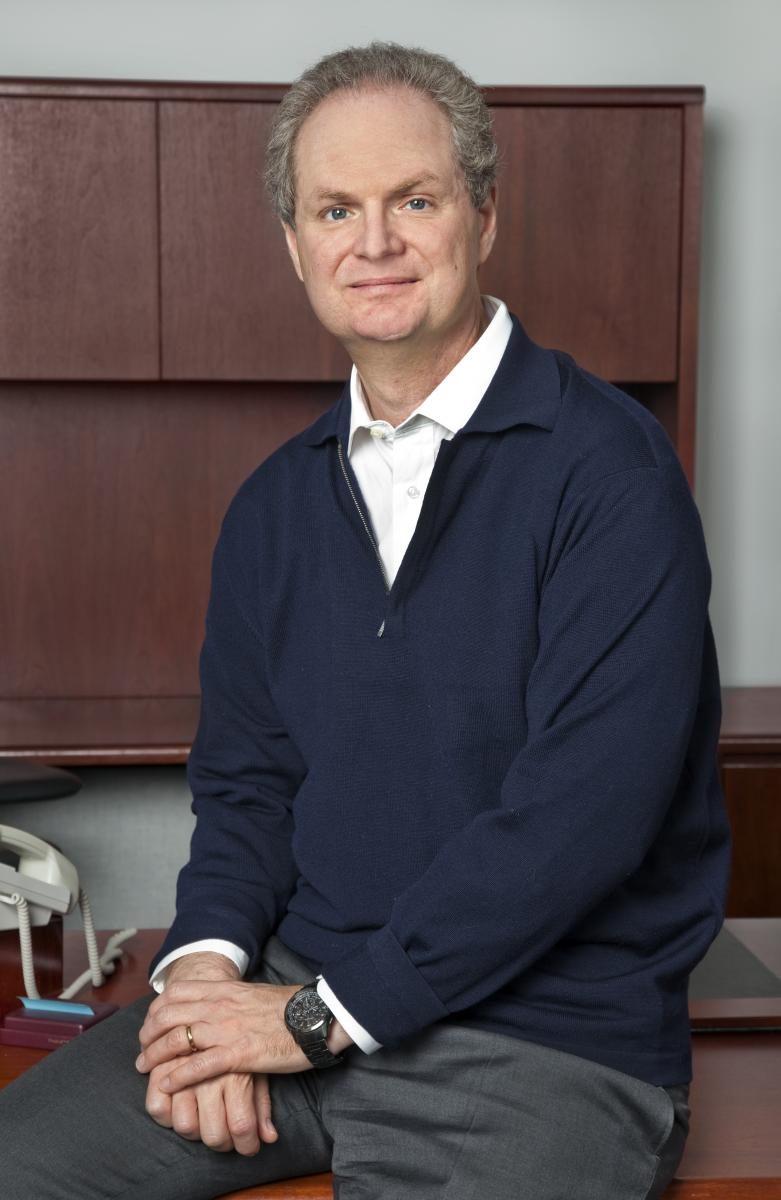 November - Paul Alivisatos appointed Lab director by University of California President Mark Yudof
November - Paul Alivisatos appointed Lab director by University of California President Mark Yudof
DER-CAM developed
The Distributed Energy Resources Customer Adoption Model (DER-CAM) is developed as a powerful, comprehensive decision support tool that helps users find optimal distributed energy resource (DER) investments in the context of buildings or multi-energy microgrids.
Creation of the Materials Project
The Materials Project is formed, providing the largest collection of materials properties to all scientists worldwide, free and open to the public. It provides open, web-based access to computed information on known and predicted materials, as well as powerful analysis tools to inspire and design novel materials.
Rosenfeld is awarded the National Medal of Technology and Innovation, one of the nation’s highest honors for scientists, by President Obama.
Corporate energy-management tool introduced
The International Standards Organization publishes ISO 50001, an international standard for the implementation of corporate energy management using a continuous improvement model. ETA researchers were key participants of the committee that developed and ratified the standard.
Researchers are instrumental in the establishment of the Joint Center for Energy Storage Research, a partnership of national laboratories, universities and industry. Its mission is to create game-changing, next-generation energy storage technologies that will transform transportation and the electric grid in the same way lithium-ion batteries transformed personal electronics.
Battling global poverty
Berkeley Lab establishes the Institute for Globally Transformative Technologies to discover, develop, and deploy technologies to create low-carbon pathways to battle global poverty.
Researchers find for the first time that thirdhand smoke — the noxious residue that clings to surfaces long after the secondhand smoke from a cigarette has cleared out — causes significant genetic damage in human cells.
CalCharge
2013 Berkeley Lab co-creates CalCharge, a first-of-its-kind public-private partnership working to accelerate the timeline of energy storage commercialization and market adoption through technology assistance, workforce training, and market education.
The Environmental Energy Technologies Division officially becomes the Energy Technologies Area — a full-fledged area at Berkeley Lab devoted to game-changing research in buildings, energy storage, environmental analysis, energy-efficiency, buildings research, indoor and outdoor air quality, and more.
eProject Builder
The revolutionary eProject Builder is released, providing customers and implementers of energy projects with a streamlined, standardized, and secure platform for collecting and reporting energy project data. Standardization enables authorized users to conduct robust tracking, analysis and reporting across regions, government agencies and market sectors.
FLEXLAB®
FLEXLAB, the world’s most advanced integrated building and grid technologies testbed, opens its doors. The DOE facility allows users to develop and test energy-efficient building and grid technologies individually or as an integrated system, under real-world conditions. Later, innovations like FLEXGRID and building-to-grid distributed energy resource technologies and controls are added.
First National Lab embed program for start-ups
Cyclotron Road, the first incubator for entrepreneurial scientists at a U.S. national laboratory, welcomes its first cohort. Fellows are embedded and supported at Berkeley Lab for two years, then go on to start their own companies, provide jobs, and generate millions of dollars in follow-on funding.
Portable infant warmers, usable in areas of the world where electricity is not available or reliable, are invented. The warmers are proven to reduce hypothermia as a leading cause of death in premature babies by using a special heated material.
EcoBlock
Berkeley Lab partners with the City of Oakland, UC Berkeley, and others to form EcoBlock, an ambitious retrofit of a city block of existing residential homes that is more resilient to power outages, has improved indoor air quality and allows residents to co-own their main means of energy production.
Ring burner
Researchers invent a ring burner that generates exceptionally even heating, maximizes energy efficiency, and reduces harmful nitrogen oxide emissions by 90% and carbon monoxide emissions by more than 50% while enhancing the cooking experience in residential and commercial kitchens (see image).
Supporting climate goals
Researchers support the work of U.S. government policymakers to help realize the clean energy and climate change mitigation goals of the Paris Agreement for key emerging economies.
Building Performance Database
Berkeley lab launches a new version of the DOE Building Performance Database, with measured energy performance data containing over 1 million commercial and residential buildings in the U.S.
Researchers pioneer a new framework for buildings that will determine the minimum thermal energy required to keep occupants comfortable,and therefore reduce building greenhouse gas emissions and burgeoning energy demand worldwide. Additional topics in thermal energy research include fast charging of lithium-ion batteries,wastewater treatment, efficient solid-state energy conversion, machine learning for automatic design of photonic systems, and more.
Supporting the Kigali Amendment
Working with international leaders, Lab researchers assist in creating a key agreement with nearly every country in the world (the Kigali amendment) to phase out hydrofluorocarbons, which have 11,700 times the global warming potential of carbon dioxide. The Global Cooling Efficiency Program at Berkeley Lab is later established, with the goal of meeting cooling needs for all.
Researchers use algorithms to counteract cyber-physical attacks that have compromised multiple independent systems in the electric grid. This field of research analyzes the stability of different types of feedback control systems (e.g., distributed energy resources, and voltage regulation and protection systems) to improve the resilience of increasingly interconnected grid systems.
Supporting clean air in homes, buildings
ETA researchers work with stakeholders to improve air quality in California’s homes, schools, and offices by ensuring adequate ventilation during normal operation. The work includes use of high-efficiency filters to reduce particles in indoor air, to address both normal air pollution and that produced during wildfires, focusing particularly on schools to address the high rates of asthma in children.
Simulating vehicle sharing
The Behavior, Energy, Autonomy, and Mobility (BEAM) Modeling Framework is developed under DOE’s Smart Mobility Consortium to simulate the implications of vehicle sharing, electrification, and automation on transportation patterns and energy use.
My Green Car
The innovative My Green Car app is developed to help consumers decide which electric vehicle to purchase, based on their needs, by automatically detecting driving habits and calculating how various cars compare for a specific purchaser.
50001 Ready Navigator
The web application 50001 Ready Navigator goes live to support DOE’s 50001 Ready corporate energy management program. Developed and hosted at Berkeley Lab by ETA researchers, Navigator provides a self-guided process for organizational adoption of corporate energy management, culminating in DOE recognition as “50001 Ready.”
2018 Opus 12 is created by Cyclotron Road alumni, focusing on technology that identifies sources of carbon dioxide emissions, and with only water and electricity, transforms that carbon dioxide into valuable chemical products. The process reduces industrial carbon emissions while creating a new revenue stream from what is usually discarded as waste product.
A research consortium led by Berkeley Lab, along with three other national labs, is established to head a $100 million DOE desalination hub to provide secure and affordable water.
Uncovering scientific secrets
Algorithms uncover hidden scientific knowledge when researchers collect 3.3 million abstracts of published materials and feed them into an algorithm called Word2vec. By analyzing relationships between words, the algorithm is able to predict discoveries of new thermoelectric materials years in advance and suggest as-yet unknown materials as candidates for thermoelectric materials.
BETTER
The launch of Building Efficiency Targeting Tools for Energy Retrofits (better.lbl.gov), a free web application that enables building operators to quickly and easily identify the most cost-saving energy efficiency measures in buildings and portfolios using readily available building and energy data.
Working closely with industry, the Lab develops thin triple-pane windows, enabling millions of dollars in energy savings by keeping homes and businesses in areas with extreme heat or cold cool in the summer and warm in the winter.
Dramatic savings proven in building energy efficiency
The innovative Smart Energy Analytics campaign creates the world’s largest database of building energy analytics and demonstrates energy savings for more than 600 million square feet of commercial buildings and $95 million annually in savings for campaign participants.
Million Mile Fuel Cell Truck
ETA co-leads the DOE consortium to accelerate innovation and commercialization of hydrogen and fuel cell technologies. First up: the Million Mile Fuel Cell Truck — envisioning a future fleet of emission-free heavy-duty vehicles.
Energy Storage Center Launched
Berkeley Lab builds on its strong foundation of energy storage R&D to launch the Energy Storage Center, to catalyze new approaches across all types of energy storage.
Scanning scientific research
Covidscholar.org uses natural language processing techniques to not only quickly scan and search tens of thousands of research papers, but also to help draw insights and connections that may otherwise not be apparent. The hope is that the tool could eventually enable “automated science.”
In response to the COVID-19 pandemic, researchers use FLEXLAB facility to perform experiments to enable seminal research on the transmission and fate of viruses in building ventilation systems.
The buildings research team is awarded a $16 million grant from the California Energy Commission to start CalFlexHub, a new research program to advance the capability of buildings to provide a flexible energy load for California.
New class of battery materials
In a major move that disrupts current thinking about battery research, scientists develop a new class of materials that provide batteries with the same — if not higher — energy density than conventional lithium-ion batteries but can be made of inexpensive and abundant metals. Known as DRX, which stands for disordered rocksalts with excess lithium, this novel family of materials allows cathodes to be made without nickel or cobalt.